NRNP – 6531 Week 2: Kaylee Hales Derm i-Human Case Study
HPI Documentation:
You will type the History of Present Illness (HPI) in the EMR section of the case (NOT in the problem statement).
This section involves a thorough symptom analysis. Detailed documentation is crucial for patient care, coding, and billing. Your goal is to clearly describe the patient’s condition. This section is for subjective findings. Use the LOCATES or OLDCARTS mnemonic to complete your HPI. Start each HPI with the patient’s age, race, and gender (e.g., 34-year-old African American male). Include the seven attributes of each principal symptom in paragraph form, not as a list. Incorporate any pertinent history that might impact the differential diagnosis formulation. For example, if the chief complaint (CC) is “headache,” the LOCATES for the HPI would include:
- Location: Head
- Onset: 3 days ago
- Character: Pounding, pressure around the eyes and temples
- Associated signs and symptoms: Nausea, vomiting, photophobia, phonophobia
- Timing: After being on the computer all day at work
- Exacerbating/relieving factors: Light bothers eyes, Aleve makes it tolerable but not completely better
- Severity: 7/10 on the pain scale
Plan Documentation:
Type the information regarding each of the following sections into the i-Human Plan section of your case. Address each of the 6 topics below. If a section is not applicable (e.g., no consults needed), explicitly state so (e.g., “No consults indicated”). Each section is worth 5 points for a total of 30 points.
- Additional Labs or Diagnostic Tests: Identify any additional laboratory or diagnostic tests needed to establish or evaluate a condition. Note that some tests, such as MRI, may require prior authorization from the patient’s insurance carrier.
- Consults: Specify referrals to specialists, therapists (physical, occupational), counselors, or other professionals. If the patient is being sent to the hospital, include the orders for a direct admit.
- Therapeutic Modalities: Detail both pharmacological and non-pharmacological management. Provide specific medications, dosages, and durations. Include anticipated therapeutic modalities or symptomatic treatment for patients if they are sent to the ED or directly admitted.
- Health Promotion: Address risk factors as appropriate and consider age-appropriate preventive health screenings. Identify any needed immunizations.
- Patient Education: Provide explanations and advice to the patient and family members about the diagnosis and treatment plan.
- Disposition/Follow-Up Instructions: Include when to follow up in the clinic, when to follow up sooner, and when to go to the ER. Specify when the patient should be seen by a specialist or therapist. Provide instructions for returning sooner and for seeking care at other facilities such as an emergency department or urgent care center.
Finally, include a minimum of three timely, scholarly references that support this plan and adhere to current standards of care. The course text may NOT be used as a reference. Ensure the references are professional and not from general patient education websites.
Assignment: i-Human Case Study: Evaluating and Managing Integumentary Conditions
This course entails completing a series of case studies using the i-Human software application. The i-Human Patients (IHP) Case Player allows interaction with virtual patients to enhance patient-assessment and diagnostic-reasoning skills. Through IHP, you can independently interview, examine, diagnose, and treat virtual patients, receiving expert feedback on your performance.
Photo Credit: RFBSIP / Adobe Stock
The integumentary system is susceptible to various diseases, conditions, and injuries, ranging from minor bacterial or fungal infections categorized as disorders to life-threatening conditions like skin cancer and severe burns.
Case Study Assignment: In this assignment, you will analyze your first case study involving a patient with an integumentary condition. You will formulate a differential diagnosis, evaluate treatment options, and create an appropriate treatment plan for the patient.
To Prepare:
- Review this week’s Learning Resources to understand assessing, diagnosing, and treating integumentary conditions.
- Access i-Human from this week’s Learning Resources and review the assigned case study. Consider the necessary health history to collect from the patient.
- Identify appropriate physical exams and diagnostic tests to gather more information about the patient’s condition.
- Reflect on how the results will contribute to making a diagnosis.
- Identify three to five possible conditions for the patient’s differential diagnosis.
- Consider clinical guidelines supporting the diagnosis.
- Develop a treatment plan that incorporates health promotion and patient education strategies for integumentary conditions.
Assignment: Interact with this week’s i-Human patient and complete the assigned case study. For guidance on using i-Human, refer to the i-Human Graduate Programs Help link within the i-Human platform.
Rubric
| Criteria | Novice | Competent | Proficient |
| HPI Statement | 0 (0%) – 5 (5%) | 6 (6%) – 10 (10%) | 11 (11%) – 15 (15%) |
| History | 0 (0%) – 6 (6%) | 7 (7%) – 8 (8%) | 9 (9%) – 10 (10%) |
| Physical Exam | 0 (0%) – 6 (6%) | 7 (7%) – 8 (8%) | 9 (9%) – 10 (10%) |
| Testing | 0 (0%) – 6 (6%) | 7 (7%) – 8 (8%) | 9 (9%) – 10 (10%) |
| Differential Diagnosis | 0 (0%) – 9 (9%) | 10 (10%) – 14 (14%) | 15 (15%) – 20 (20%) |
| Plan for Patient | 0 (0%) – 15 (15%) | 16 (16%) – 25 (25%) | 26 (26%) – 30 (30%) |
| Exercises | 0 (0%) – 2 (2%) | 3 (3%) – 4 (4%) | 0 (0%) – 5 (5%) |
| Total Points | 100 |
Must Read:


